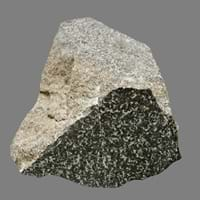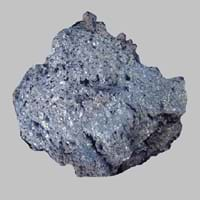Definition
Diabase is a fine-grained igneous rock which is composed mostly of pyroxene and feldspar
Picrite is a variety of high-magnesium olivine basalt that is very rich in the mineral olivine
Origin
Germany
Hawaii Islands
Discoverer
Christian Leopold von Buch
Unknown
Etymology
From Greek di + base
From Greek pikros bitter + -ite, 19th century
Class
Igneous Rocks
Igneous Rocks
Sub-Class
Durable Rock, Hard Rock
Durable Rock, Hard Rock
Other Categories
Fine Grained Rock, Medium Grained Rock, Opaque Rock
Fine Grained Rock, Opaque Rock
Texture
Aphanitic, Granular
Earthy, Rough
Color
Dark Grey to Black
Black, Brown, Colourless, Green, Grey, Pink, White, Yellow
Durability
Durable
Durable
Scratch Resistant
Yes
Yes
Appearance
Vesicular
Rough and Shiny
Interior Uses
Countertops, Decorative Aggregates, Homes, Interior Decoration, Kitchens
Countertops, Decorative Aggregates, Homes, Interior Decoration
Exterior Uses
As Building Stone, As Facing Stone, Paving Stone, Garden Decoration, Office Buildings
As Building Stone, As Facing Stone, Garden Decoration, Paving Stone
Other Architectural Uses
Curbing
Curbing
Construction Industry
As Dimension Stone, Building houses or walls, Cement Manufacture, Construction Aggregate, for Road Aggregate
As a Sintering Agent in Steel Industry to process Iron Ore, Cement Manufacture, for Road Aggregate, Manufacture of Magnesium and Dolomite Refractories, Roadstone, Used for flooring, stair treads, borders and window sills.
Medical Industry
Not Yet Used
Not Yet Used
Antiquity Uses
Artifacts, Monuments, Sculpture, Small Figurines
Artifacts, Monuments, Sculpture
Commercial Uses
An Oil and Gas Reservoir, Cemetery Markers, Commemorative Tablets, Laboratory bench tops, Jewelry, Sea Defence, Tombstones
As a Feed Additive for Livestock, As armour rock for sea walls, Metallurgical Flux, Pottery, Source of Magnesia (MgO)
Types
Not Available
Oceanite
Features
Smooth to touch
Host Rock for Lead
Archaeological Significance
Famous Monuments
Stonehenge in English county of Wiltshire
Data Not Available
Famous Sculptures
Data Not Available
Data Not Available
Pictographs
Not Used
Not Used
Petroglyphs
Not Used
Not Used
Formation
Diabase forms when molten igneous rock is squeezed up into a vertical crack in other rocks, the crack is usually forced apart and the molten rock cools in the space to form a tabular igneous intrusion cutting across the surrounding rocks and is known as a dike.
Picrite is a fine-grained, hard rock which is a type of metasomatite, essentially altered basalt. It forms with or without crystallization, either below the surface as intrusive rocks or on the surface as extrusive rocks.
Mineral Content
Augite, Chlorite, Olivine, Plagioclase, Pyroxene, Pyrrhotite, Serpentine
Biotite, Olivine, Plagioclase, Pyrrhotite
Compound Content
Aluminium Oxide, CaO, Chromium(III) Oxide, Iron(III) Oxide, Potassium Oxide, MgO, Sodium Oxide, Silicon Dioxide, Sulfur Trioxide
Al, CaO, Carbon Dioxide, Mg, MgO
Types of Metamorphism
Burial Metamorphism, Cataclastic Metamorphism, Contact Metamorphism, Regional Metamorphism
Burial Metamorphism, Cataclastic Metamorphism, Impact Metamorphism, Regional Metamorphism
Types of Weathering
Biological Weathering, Chemical Weathering
Biological Weathering
Types of Erosion
Chemical Erosion, Coastal Erosion, Water Erosion
Chemical Erosion, Coastal Erosion, Glacier Erosion, Sea Erosion, Water Erosion, Wind Erosion
Grain Size
Fine to Medium Grained
Fine Grained
Fracture
Conchoidal
Uneven
Streak
Black
White, Greenish White or Grey
Porosity
Highly Porous
Less Porous
Luster
Not Available
Subvitreous to Dull
Cleavage
Not Available
Imperfect
Specific Gravity
2.86-2.87
2.75-2.92
Transparency
Opaque
Opaque
Density
2.7-3.3 g/cm3
1.5-2.5 g/cm3
Specific Heat Capacity
Not Available
Resistance
Heat Resistant, Impact Resistant, Pressure Resistant, Wear Resistant
Heat Resistant
Deposits in Eastern Continents
Africa
South Africa, Tanzania
South Africa
Europe
Germany, Greece, Italy, Scotland, Turkey
Iceland
Others
Antarctica, Greenland
Not Yet Found
Deposits in Western Continents
North America
Canada, USA
Canada, USA
South America
Argentina, Brazil, Colombia, Venezuela
Brazil
Deposits in Oceania Continent
Australia
Central Australia, New Zealand, Queensland, Western Australia
Not Yet Found
All about Diabase and Picrite Properties
Know all about Diabase and Picrite properties here. All properties of rocks are important as they define the type of rock and its application. Diabase and Picrite belong to Igneous Rocks.Texture of Diabase is Aphanitic, Granular whereas that of Picrite is Earthy, Rough. Diabase appears Vesicular and Picrite appears Rough and Shiny. The luster of Diabase is not available while that of Picrite is subvitreous to dull. Diabase is available in dark grey to black colors whereas Picrite is available in black, brown, colourless, green, grey, pink, white, yellow colors. The commercial uses of Diabase are an oil and gas reservoir, cemetery markers, commemorative tablets, laboratory bench tops, jewelry, sea defence, tombstones and that of Picrite are as a feed additive for livestock, as armour rock for sea walls, metallurgical flux, pottery, source of magnesia (mgo).










